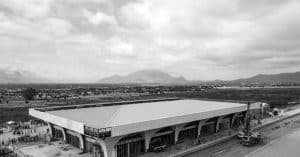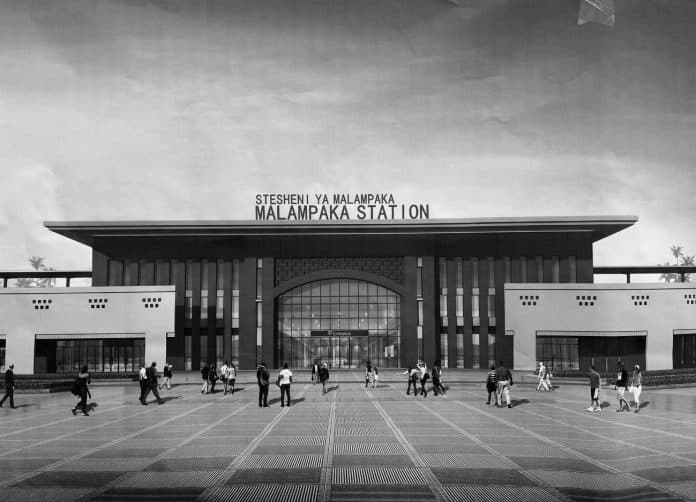Introduction to the Standard Gauge Railway (SGR) project
The Standard Gauge Railway (SGR) project in Tanzania is a transformative infrastructure initiative that is poised to revolutionize the country’s trade and transportation landscape. This ambitious project aims to connect Tanzania’s major economic hubs, including the bustling city of Isaka, with a modern and efficient rail network. The SGR represents a significant investment in Tanzania’s future, as it seeks to enhance the nation’s connectivity, boost economic growth, and solidify its position as a regional trade hub.
The significance of Isaka as a strategic location

Isaka, a city located in the northwestern region of Tanzania, has emerged as a strategic focal point for the SGR project. Strategically situated near the borders of Tanzania, Uganda, and Rwanda, Isaka is well-positioned to serve as a crucial hub for regional trade and logistics. The city’s proximity to these neighboring countries, coupled with its existing infrastructure and transportation links, makes it an ideal location for the SGR to thrive.
The impact of the SGR on Tanzania’s trade industry
The implementation of the SGR has had a profound impact on Tanzania’s trade industry. By providing a reliable and efficient means of transporting goods and materials, the railway has helped to streamline the country’s supply chains, reduce transportation costs, and increase the overall competitiveness of Tanzanian products in both domestic and international markets. As a result, businesses across various sectors have experienced a surge in trade activity and have been able to expand their reach beyond Tanzania’s borders.
Benefits of the SGR for businesses in Isaka
For businesses located in Isaka, the SGR has been a game-changer. The improved connectivity and reduced transportation times have enabled these companies to access new markets, forge stronger partnerships with suppliers and customers, and capitalize on opportunities for growth. Additionally, the SGR has facilitated the movement of raw materials, finished goods, and other essential commodities, ensuring that Isaka-based businesses can operate more efficiently and effectively.
Challenges faced during the construction of the SGR
The construction of the SGR has not been without its challenges. The project has faced logistical hurdles, such as coordinating the movement of heavy machinery and materials across vast distances, as well as navigating complex terrain and environmental considerations. Furthermore, the project has required significant financial investment and has necessitated the collaboration of various stakeholders, including the Tanzanian government, international partners, and local communities.
Success stories of businesses in Isaka due to the SGR

Despite the challenges, the SGR has already begun to yield tangible benefits for businesses in Isaka. Several local companies have reported remarkable growth and expansion, as they have been able to access new markets, streamline their operations, and capitalize on the increased trade activity facilitated by the railway. These success stories serve as a testament to the transformative power of the SGR and its potential to drive economic development in the region.
How the SGR is improving transportation and logistics in Tanzania
The SGR has had a profound impact on Tanzania’s transportation and logistics landscape. By providing a reliable and efficient rail network, the project has helped to alleviate the strain on the country’s road infrastructure, reducing congestion and minimizing the wear and tear on highways. Furthermore, the SGR has enabled the faster and more cost-effective movement of goods, contributing to improved supply chain management and enhanced competitiveness for Tanzanian businesses.
Future plans for the SGR and its potential impact on trade
The SGR project is part of a larger vision to transform Tanzania’s transportation and trade landscape. The government has outlined plans to extend the railway network to neighboring countries, such as Uganda and Kenya, further enhancing regional connectivity and trade opportunities. As the SGR continues to expand and evolve, it is expected to have an even more significant impact on Tanzania’s trade industry, positioning the country as a regional economic powerhouse.
Isaka as a hub for regional trade
Isaka’s strategic location, coupled with the SGR’s presence, has positioned the city as a hub for regional trade. Businesses in Isaka now have the opportunity to access markets across East Africa, forging new partnerships and expanding their customer bases. This increased trade activity has led to the creation of new jobs, the influx of investment, and the overall economic development of the region.
Conclusion: The transformative role of the SGR in boosting Tanzania’s trade
The Standard Gauge Railway project in Tanzania has been a transformative initiative, with far-reaching implications for the country’s trade industry. By enhancing connectivity, streamlining logistics, and facilitating the movement of goods and materials, the SGR has empowered businesses in Isaka and across Tanzania to thrive. As the project continues to evolve and expand, it is poised to play an even more significant role in boosting Tanzania’s trade, solidifying its position as a regional economic hub, and driving sustainable growth and development.
For more articles related to Railway and train travel Tanzania, click here!

































